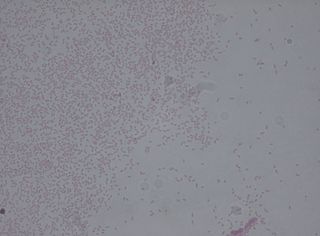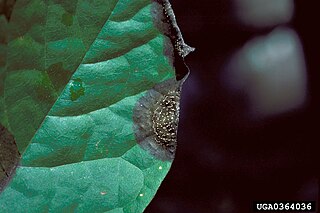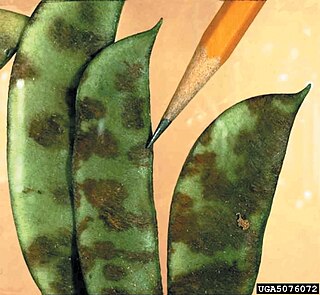This article needs additional citations for verification .(January 2025) |
Diseases of apples (Malus domestica) include:
This article needs additional citations for verification .(January 2025) |
Diseases of apples (Malus domestica) include:
| Pseudomonadota | |
|---|---|
| Blister spot | Pseudomonas syringae pv. papulans |
| Crown gall | Agrobacterium tumefaciens |
| Fire blight | Erwinia amylovora |
| Hairy root | Agrobacterium rhizogenes |
| Mycoplasmatota | |
| Apple chat fruit | Phytoplasma suspected |
| Apple decline | Phytoplasma suspected |
| Apple proliferation | Phytoplasma |
| Rubbery wood | Phytoplasma suspected |
| Nematodes, parasitic | |
|---|---|
| Dagger nematode | |
| Lesion nematode | |
| Pin nematode | Paratylenchus spp. |
| Ring nematode | Criconemella spp. |
| Root-knot nematode | Meloidogyne spp. |
| Viral diseases | |
|---|---|
| Apple chlorotic leafspot | genus Trichovirus, Apple chlorotic leafspot virus (ACLSV) |
| Apple dwarf (Malus platycarpa) | Apple stem pitting virus (ASPV) (? not US/CAN) |
| Apple flat apple | genus Nepovirus, Cherry rasp leaf virus (CRLV) |
| Apple mosaic | genus Ilarvirus, Apple mosaic virus (ApMV) genus Ilarvirus, Tulare apple mosaic virus (TAMV) |
| Apple stem grooving = Apple decline of Virginia crab | genus Capillovirus, Apple stem grooving virus (ASGV) |
| Apple stem pitting = apple Spy 227 epinasty and decline | Apple stem pitting virus (ASPV) |
| Apple union necrosis and decline | genus Nepovirus, Tomato ringspot virus (ToRSV) |
| Viroid diseases | |
|---|---|
| Swollen apple | Apple fruit crinkle viroid (AFCVd) |
| Apple dimple fruit | Apple scar skin viroid (ASSVd) |
| Apple fruit crinkle | Apple fruit crinkle viroid (AFCVd) (Japan) |
| Apple scar skin = apple dapple, apple sabi-ka, apple bumpy fruit | Apple scar skin viroid (ASSVd) |
| Suspected viral- and viroid-like diseases | |
|---|---|
| Dead spur | GTP, unidentified |
| False sting | GTP, virus suspected |
| Green crinkle | GTP, virus suspected |
| Rough skin | GTP, virus suspected |
| Star crack | GTP, virus suspected |
| Miscellaneous diseases and disorders | |
|---|---|
| Bitter pit | Localized calcium deficiency |
| Blossom blast | Boron deficiency |
| Burrknot | Genetically predisposed rootstock |
| Fruit cracking | Genetic |
| Fruit russet | Frost, sprays, etc. |
| Green mottle | Unidentified |
| Hollow apple | High temperature |
| Internal bark necrosis = measles | Low pH and mineral nutrient imbalance |
| Internal browning | Boron and calcium deficiencies, etc. |
| Jonathan spot | Reduced by controlled atmosphere storage |
| Narrow leaf | Genetic |
| Necrotic leaf blotch of ‘Golden Delicious’ | Rapid synthesis of gibberellins triggered by environmental factors |
| Spray injury | Spray |
| Storage scald | Injury to fruit surfaces by naturally occurring gases produced by the fruit |
| Sunburn | Sun injury to fruit |
| Sunscald | Freezing of bark following high temperatures in winter |
| Water core | Sorbitol accumulation |

A plant canker is a small area of dead tissue, which grows slowly, often over years. Some cankers are of only minor consequence, but others are ultimately lethal and therefore can have major economic implications for agriculture and horticulture. Their causes include a wide range of organisms as fungi, bacteria, mycoplasmas and viruses. The majority of canker-causing organisms are bound to a unique host species or genus, but a few will attack other plants. Weather and animal damage can also cause stress to the plant resulting in cankers. Other causes of cankers is pruning when the bark is wet or using un-sterilized tools.

Pantoea agglomerans is a Gram-negative bacterium that belongs to the family Erwiniaceae.

Colletotrichum acutatum is a plant pathogen and endophyte. It is the organism that causes the most destructive fungal disease, anthracnose, of lupin species worldwide. It also causes the disease postbloom fruit drop on many varieties of citrus, especially Valencia and navel oranges in Florida.
Colletotrichum higginsianum is an ascomycete pathogen that causes anthracnose disease on many plants in the Brassicaceae, including Arabidopsis thaliana and many cultivated forms of Brassica and Raphanus.
Pythium ultimum is a plant pathogen. It causes damping off and root rot diseases of hundreds of diverse plant hosts including maize, soybean, potato, wheat, fir, and many ornamental species. P. ultimum belongs to the peronosporalean lineage of oomycetes, along with other important plant pathogens such as Phytophthora spp. and many genera of downy mildews. P. ultimum is a frequent inhabitant of fields, freshwater ponds, and decomposing vegetation in most areas of the world. Contributing to the widespread distribution and persistence of P. ultimum is its ability to grow saprotrophically in soil and plant residue. This trait is also exhibited by most Pythium spp. but not by the related Phytophthora spp., which can only colonize living plant hosts.

Phaeosphaeria nodorum is a major fungal pathogen of wheat, causing the disease Septoria nodorum blotch. It is a member of the Dothideomycetes, a large fungal taxon that includes many important plant pathogens affecting all major crop plant families.

Colletotrichum coccodes is a plant pathogen, which causes anthracnose on tomato and black dot disease of potato. Fungi survive on crop debris and disease emergence is favored by warm temperatures and wet weather.

Glomerella cingulata is a fungal plant pathogen, being the name of the sexual stage (teleomorph) while the more commonly referred to asexual stage (anamorph) is called Colletotrichum gloeosporioides. For most of this article the pathogen will be referred to as C. gloeosporioides. This pathogen is a significant problem worldwide, causing anthracnose and fruit rotting diseases on hundreds of economically important hosts.

Colletotrichum is a genus of fungi that are symbionts to plants as endophytes or phytopathogens. Many of the species in this genus are plant pathogens, but some species may have a mutualistic relationship with hosts.
Ross Ewen Beever was a New Zealand geneticist and mycologist.

Cladosporium cladosporioides is a darkly pigmented mold that occurs world-wide on a wide range of materials both outdoors and indoors.

Glomerellales is an order of ascomycetous fungi within the subclass Hypocreomycetidae (Sordariomycetes). The order includes saprobes, endophytes and pathogens on plants, animals and other fungi with representatives found all over the world in varying habitats.
Hemibiotrophs are the spectrum of plant pathogens, including bacteria, oomycete and a group of plant pathogenic fungi that keep its host alive while establishing itself within the host tissue, taking up the nutrients with brief biotrophic-like phase. It then, in later stages of infection switches to a necrotrophic life-style, where it rampantly kills the host cells, deriving its nutrients from the dead tissues.

Colletotrichum fioriniae is a fungal plant pathogen and endophyte of fruits and foliage of many broadleaved plants worldwide. It causes diseases on agriculturally important crops, including anthracnose of strawberry, ripe rot of grapes, bitter rot of apple, anthracnose of peach, and anthracnose of blueberry. Its ecological role in the natural environment is less well understood, other than it is a common leaf endophyte of many temperate trees and shrubs and in some cases may function as an entomopathogen.

Bitter rot of apple is a fungal disease of apple fruit that is caused by several species in the Colletotrichum acutatum and Colletotrichum gloeosporioides species complexes. It is identified by sunken circular lesions with conical intrusions into the apple flesh that appear V-shaped when the apple is cut in half through the center of the lesion. It is one of the most devastating diseases of apple fruit in regions with warm wet weather.